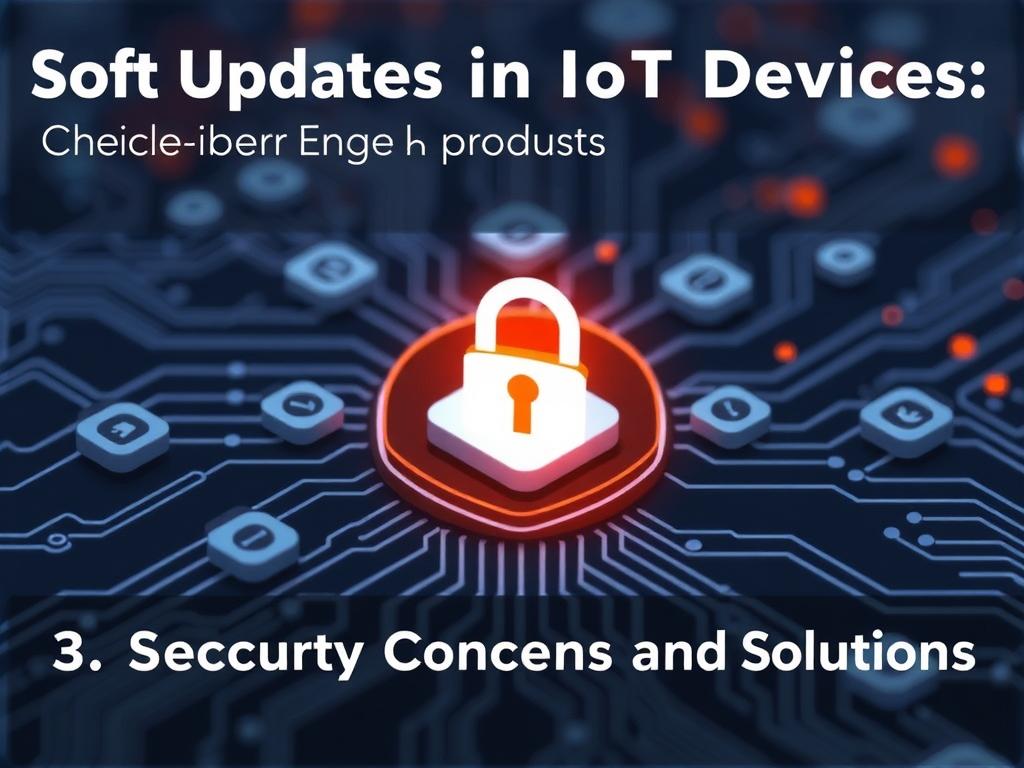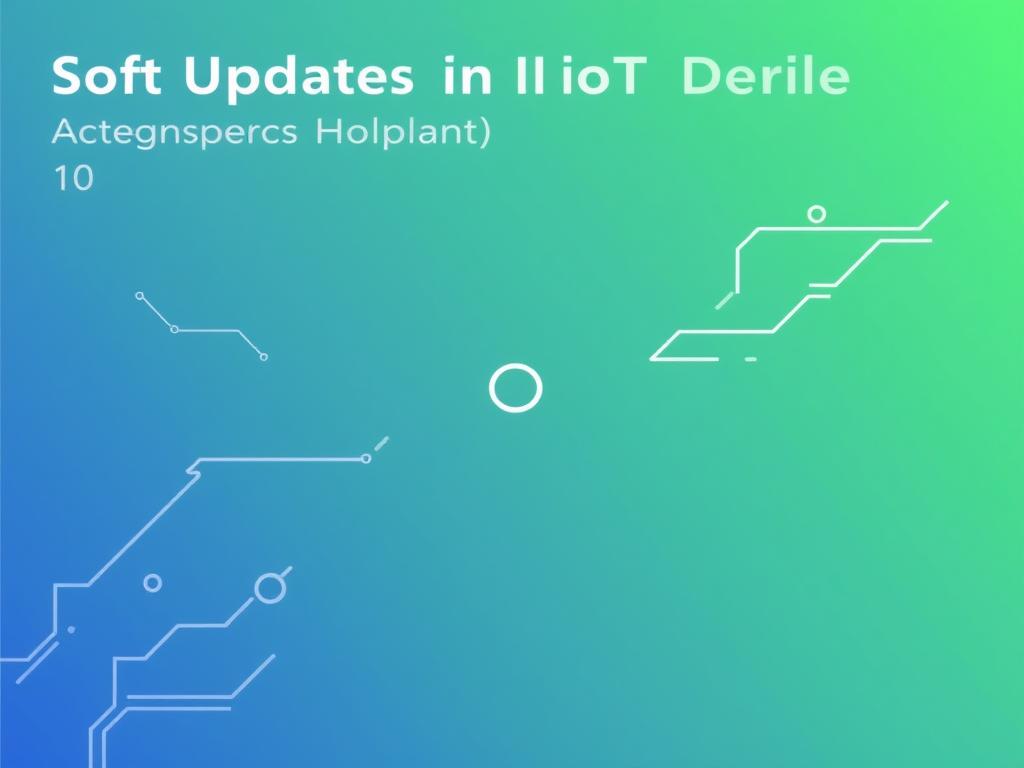Understanding Soft Updates in IoT Devices
In the rapidly evolving world of the Internet of Things (IoT), soft updates have become an essential component in maintaining device functionality without disrupting user experience. Soft updates refer to the process of updating firmware, software, or configurations on IoT devices seamlessly and often over-the-air (OTA), enabling improvements and fixes without requiring the device to be taken offline or manually reset. For many users and industries relying on IoT devices, this approach is critical because it allows continuous operation while keeping devices secure and up to date.
Unlike traditional hard updates that often require devices to reboot or pause service, soft updates are designed to minimize downtime and provide a smoother transition to new operating parameters. This is especially important in IoT ecosystems where devices might be spread across wide geographic areas, embedded in critical infrastructure, or expected to operate continuously, such as in smart homes, healthcare monitoring, or industrial automation.
Challenges in Implementing Soft Updates
While soft updates bring multiple benefits, their implementation in IoT devices is not without significant hurdles. Let’s explore the key challenges developers and engineers face when deploying these updates.
1. Limited Device Resources
IoT devices are often constrained by limited processing power, memory, and storage. Unlike traditional computers or smartphones, many IoT devices operate with minimal resources to keep costs low and battery life long. This restriction means that the update process must be lightweight and efficient, avoiding excessive use of memory or CPU cycles during the update.
2. Connectivity Issues
Many IoT devices depend on wireless connections, which can be unstable or intermittent. Soft updates typically occur over the air, but poor or unreliable connectivity can lead to incomplete or corrupted updates, causing device malfunction or failures. Overcoming these connectivity challenges requires robust mechanisms to ensure update integrity and the ability to resume or rollback failed updates smoothly.
3. Security Concerns

Soft updates are an obvious target for malicious actors aiming to inject harmful code or compromise devices. Ensuring the authenticity and integrity of updates is essential. This means implementing secure boot, using encryption during transmission, and verifying digital signatures to protect devices throughout the update process.
4. Diverse Device Ecosystems
IoT deployments often include a wide range of devices from different manufacturers with varying hardware and software configurations. Creating a one-size-fits-all update system is almost impossible. Developers must design update solutions that can be customized or adapted for different device types, operating systems, and network environments.
5. User Experience and Downtime
Even though soft updates aim to reduce disruption, poorly designed update processes can create noticeable interruptions or degrade device performance temporarily. For critical devices, any downtime or unexpected behavior can lead to frustration or, worse, dangerous situations. Maintaining a seamless user experience throughout the update cycle is a major design challenge.
Solutions and Best Practices for Effective Soft Updates
Given the challenges, successful implementation of soft updates requires adopting a combination of best practices, design principles, and technical innovations. Below are some proven approaches that can help mitigate these issues.
1. Incremental Updates and Delta Patching
Instead of sending complete firmware builds, incremental updates only transmit changes between current and new versions. Delta patching techniques reduce the update size significantly, which is crucial for bandwidth-limited scenarios and helps decrease update time and risk. This method conserves device storage and ensures faster, more reliable updates.
2. Robust Update Frameworks
Utilizing an update framework that supports features like atomic update installation, rollbacks, and validation checks is essential. Atomic updates guarantee that a device either fully completes an update or reverts to the previous state, preventing partial updates that could render devices inoperable.
3. Secure Update Channels
Security measures such as encrypted communications (TLS), digital signatures, and code signing help confirm the authenticity of the update packages. A well-designed authentication mechanism prevents attackers from exploiting the update process to deploy malicious software. Firmware Integrity Verification is another recommended practice to check device integrity before and after updates.
4. Scheduling and Update Management
Offering user-configurable scheduling for soft updates or deferring updates during peak usage times can improve user experience. Furthermore, centralized update management platforms allow administrators to monitor updates, manage devices at scale, and troubleshoot issues quickly.
5. Lightweight Update Agents

Developing minimalistic software agents responsible for managing updates reduces the demand on device resources. These agents should be optimized for low power consumption and limited storage, fitting well within constrained IoT device architectures.
Key Solutions at a Glance
| Challenge | Solution | Benefits |
|---|---|---|
| Limited Device Resources | Incremental Updates and Lightweight Agents | Reduces memory and processing load, faster updates |
| Connectivity Issues | Robust Frameworks with Atomic Updates and Resume Capability | Ensures update completeness, avoids bricking devices |
| Security Concerns | Secure Channels, Digital Signatures, Firmware Verification | Prevents malicious attacks, protects device integrity |
| Diverse Ecosystem | Customizable Update Platforms and Flexible Architectures | Adaptable solutions for different devices and OS |
| User Experience & Downtime | Update Scheduling and Centralized Management | Minimizes disruptions, improves user satisfaction |
Emerging Technologies Shaping Soft Updates
As IoT continues to grow, technology advancements are aiding in overcoming update-related challenges. Edge computing, for example, allows local processing that can handle updates closer to the device, reducing latency and dependency on cloud infrastructure. Machine learning algorithms are also being leveraged to predict the best update times and detect vulnerabilities proactively, enhancing update strategies.
Moreover, blockchain is being explored to provide transparent and tamper-proof records of update histories, increasing trust in the update process. With these technologies in play, soft updates will become even more reliable and secure, ensuring IoT devices remain safe and functional over their long operational lives.
Checklist: Steps to Implement Effective Soft Updates
- Analyze device hardware and memory constraints.
- Develop incremental update packages to minimize size.
- Implement secure communication protocols for update delivery.
- Use atomic update mechanisms with rollback capabilities.
- Design update agents optimized for low resource usage.
- Provide scheduling options to reduce user disruption.
- Incorporate comprehensive logging and monitoring tools.
- Regularly test updates in simulated environments before deployment.
- Ensure update compatibility across various device types.
- Stay updated on emerging security threats related to IoT updates.
Conclusion

Soft updates in IoT devices are a game-changer, enabling devices to evolve and adapt without causing downtime or user inconvenience. However, the road to flawless soft updates is riddled with challenges, ranging from limited device resources and unreliable connectivity to security risks and varied device ecosystems. By embracing solutions like incremental updates, strong security protocols, and robust management frameworks, developers can overcome these hurdles effectively. The future, enhanced by cutting-edge technologies like edge computing and blockchain, promises even more resilient and seamless update experiences. For anyone involved in IoT development or deployment, understanding and mastering soft update processes is crucial to delivering reliable and secure devices in an increasingly connected world.

